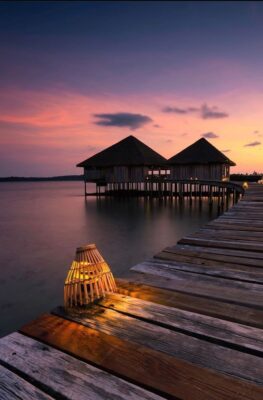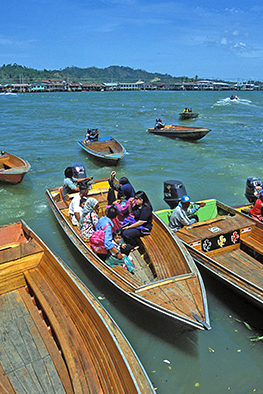Published on March 18, 2016

Tuk-tuk in Thailand. Image © Jody Sticca / Creative Commons
A few transportation options in Southeast Asia simply don’t exist anywhere else – making them indispensable travel experiences to each of the countries they serve. Pick a country, choose one of these transportation options and hit the streets!
Tuk-tuks. In Cambodia, Laos, and Thailand, tuk-tuks – nimble three-wheeled auto-rickshaws – rule the road. You’ll find them hurtling through city streets, squeezing in between cars and motorbikes with little regard for safety (for its passengers and passersby!). For all its rough edges, the tuk-tuk is a mandatory experience for the foreign traveller: you can’t really say you’ve visited till you’ve survived a ride.
The “remorque”, Cambodia’s take on the tuk-tuk, has a two-wheeled passenger trailer attached behind a motorcycle. The “jumbo” in Laos, on the other hand, is a one-piece tuk-tuk made to seat up to eight passengers on two benches set on each side of the passenger’s area – perfect for temple tours in Luang Prabang. Thailand’s “sam-lor” have passenger carts and seats facing forward, an iconic form of transport throughout the country.
Stories of its origin vary. In one account, tuk-tuks purportedly originated from an unlikely source – the inventor of the Vespa. In 1947, Corradino D’Ascano invented a three-wheeled commercial vehicle, christened the “Piaggio Ape,” to revitalize Italy’s post-war transportation industry. Knock-off versions of this automobile evolved, leading to the tuk-tuk of today.

Philippine jeepney. Image © spreketek / Creative Commons
Jeepneys. An icon of national identity, the Philippines’ jeepney symbolizes the Filipino working class, serving as their primary mode of transportation. Renowned Filipino poet, Gemino Abad, describes it as “a genius of salvage”, writing that this “phoenix in our street”is “a daily lesson of history / sweating in a tight corner.”
The jeepney descended from American military jeeps. The surplus of these vehicles left over after World War II became the basis for today’s jeepney. Tourists can see so much more under the surface: its American origin, its salvaged Japaneseparts, its paintings of Catholic religious icons on its chrome shell – all these parts speak of the Philippines’ identity as a post-colonial nation.
In the Philippines, jeepneys careen through streets and highways, blaring horns and flashing all manner of designs and decorations. Its chrome shell is typically spray-painted with characters from pop culture, if not portraits of the jeepney owner’s family, or renditions of Jesus Christ and the Virgin Mary. Filipinos use the jeepney on an everyday basis, commuting to work or school in the city, or traversing between towns in provincial locales.

Water taxis in Bandar Seri Begawan. Image courtesy of Brunei Tourism.
Water taxis. Brunei boasts of the water taxi, a uniquely local form of transportation suited to the tiny nation’s riverine way of life. Brunei’s capital, Bandar Seri Bengawan, is famous for its Kampong Ayer, a sprawling water village whose residents rely on these small, narrow, motorized boats to get around.
For travelers, water taxi tours are a popular diversion, especially for wildlife immersions where tourists can spot Brunei’s famous proboscis monkeys along mangrove forests around Brunei Bay, or check out a view of the sultan’s palace, Istana Nurul Iman, from the water.

Cyclo. This three-wheeled vehicle in Viet Nam suits travelers who like to take it a little slow; cyclos are a popular choice for city tours in the country’s key cities, among them Ha Noi, Da Nang, Hue, and Ho Chi Minh City.






